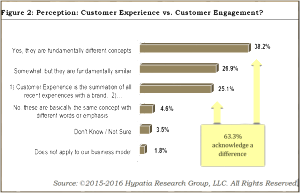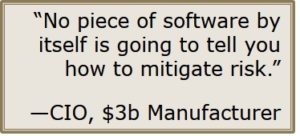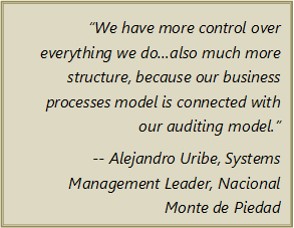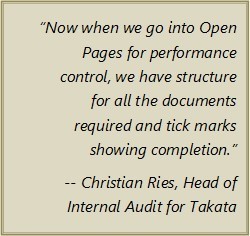The post Social Customer Support: Much More Than “Social Media Monitoring” Tools appeared first on Hypatia Research Group.
]]>Providing social customer service and support in today’s multi-channel environment is by no means an easy task. Driven by high volumes of online user generated content, social intelligence is a phenomenon searching for pragmatic, actionable business use cases with clear justification of return on investment. There is no dearth of software and service vendors offering sentiment analysis, twitter analytics, content analytics, and speech analytics tools. Each offers dashboards, drill-downs, graphs or other types of visualization that illustrate metrics for online sentiment analysis (positive, neutral, mixed or negative), such as influencer or net-promoter scores, share of voice, volume, product quality issues, crisis management, share price cause and effect or media and brand reach.
Some software vendors offer sentiment analysis to classify and prioritize customer conversations by topic, issue or sentiment prior to agents opening their work-queue. Others deploy text analytics and business process rules to route these conversations by urgency, issue, topic and/or suggested corrective action or opportunity to the appropriate agent based upon expertise in handling certain issues.
Figure 1: Top Drivers for Investment in Social Media
Across all industry sectors and business models—B2B, B2C and the marketing two-step B2B2C–businesses strive to know more about their customers. How old are they, where do they live, what channels of communication do they prefer and why? What products, services and content interest them, and what influences them to purchase or recommend certain products or brand?
Most importantly, organizations want to know, how do we harness this exploding phenomenon of user-generated content, commonly known as “social media” in order to supply superior customer service and support? The complexity of harnessing this rich treasure-trove of customer information in today’s highly commoditized[1] global marketplace presents challenges as well as opportunities for businesses seeking to foster higher levels of customer intimacy in order to engage, retain and to realize full customer lifetime value.
Bottom-line: Social Customer Support: Much More Than “Social Media Monitoring” Tools.
[1]Excelling in customer service and support is often the key advantage in a highly commoditized and competitive marketplace.
The post Social Customer Support: Much More Than “Social Media Monitoring” Tools appeared first on Hypatia Research Group.
]]>The post 10 CRM Trends to Watch in 2017 appeared first on Hypatia Research Group.
]]>A new calendar year doesn’t necessarily mean seismic shifts in the attitudes, practices, and technologies that define an industry, but it does provide an opportunity to reflect on where we’ve been and where we’re heading. But if there is one overarching theme, it’s that customer expectations for excellent experiences are not going to let up anytime soon, and because of this, companies can’t afford to get too comfortable.
TECHNOLOGIES WILL CONVERGE: “When they can’t pull the data from disparate systems together, expect businesses to grow weary of so-called best-of-breed solutions that present integration, implementation, and deployment challenges, warns Leslie Ament, senior vice president and chief research officer at Hypatia Research Group. Vendors with integration-ready partnerships, partnership ecosystems, and/or one-stop solutions are gaining ground in this marketplace,” she states.
“This is especially important considering that most companies still buy their CRM technologies in separate pieces for each individual department. For instance, while a firm might elect to purchase Oracle’s Marketing Cloud for the marketing department, it might choose Salesforce.com’s Sales Cloud for the sales organization. Those two must connect seamlessly to allow for cross-pollination.”
USERS WILL BE BETTER ABLE TO BLEND CHANNELS: Ament “anticipates another move within organizations: enabling agents to blend channels, with a single interface that lessens their need to toggle between screens and applications to accomplish their increasing list of tasks.” Most of the major CRM players have started to investigate such technologies in a big way. Salesforce.com, for instance, has been making noise around its Einstein AI solutions. Pegasystems has invested in robotic automation to help with routine tasks. Oracle has introduced adaptive intelligent cloud applications that tackle common ground. Similarly, IBM’s Watson’s cognitive computing tools learn over time to cut corners. It wouldn’t be surprising to see others entering this market in the near future.
CRM WILL BECOME A LITTLE MORE VERTICAL: While it is by no means becoming the norm for companies to invest in CRM systems that are designed specifically for use in one industry or another, analysts point out that larger CRM vendors are offering additional software and services that apply to a number of verticals.
Ament says that “embedding industry-specific and repeatable workflow business processes into customer engagement interactions” will pick up even more steam in the coming months. “This is especially evident in process-driven industries such as pharmaceuticals, financial services, and manufacturing sectors.”
Full article at 10 CRM Trends to Watch in 2017.
The post 10 CRM Trends to Watch in 2017 appeared first on Hypatia Research Group.
]]>The post Enrich Customer Journey Design with Customer Analytics appeared first on Hypatia Research Group.
]]>In this age of digital engagement, interaction, and commerce, analyses of customers’ interactional and transactional behaviors with the goal of creating actionable business insights are essential in designing effective multi-channel customer journeys. Business intelligence applications and dashboards are useful for reporting and providing historical or near-real time guidance and trends. However, transforming massive amounts of customer information (structured and contextual) into actionable insights is a significant challenge for organizations of all sizes, across all industries and all geographies. (See “Delivering Big Data Analytics Insights: Why Choose Between Accuracy, Agility or Speed?”)
Why do organizations seek to design effective multi-channel customer journeys? Customers demand it. Technology has enabled consumers to use multiple channels to interact at the time, place, and manner of their preference. In order to defend or retain market share and to potentially increase top line growth and cost reductions, businesses are compelled to respond to customer demands.
Leveraging Omni and/or multi-channel customer analytics & insights to enrich customer journey design has the potential to:
- Optimize Omni-channel customer interactions and engagement;
- Enhance employee engagement via “Guided Intelligence
 ” (e.g. a version of next best offer);
” (e.g. a version of next best offer); - Segment, profile, predict and prescribe best practices for optimal types of customer engagement;
- Mitigate identity theft, fraud & risk, (See “Customer Identity Authentication: Best Practices in Avoiding Identity Theft, Fraud & Risk.”);
- Improve operational business processes through a customer-centric lens.
Customer Analytics and Insights
Insights gleaned from business intelligence reports and dashboards are worthwhile for decision support, early warning signals or identifying trends that warrant further investigation before taking action. However, advances in analytical technology (cognitive and machine learning) for example—combined with the proliferation of customer engagement channels has created the potential to fuel Omni-channel customer journey design.
At present, there are five main types of advanced analytics:
- Descriptive-Identifies customer segments using metrics such as frequency, lifetime value, or behavior, in order to create propensity models.
- Diagnostic-Explores causal relationships like root cause analysis to better understand why customers purchase or pass on offers.
- Predictive-Uses customers’ past behavior with seasonal or lifestyle triggers to model and predict future behavior.
- Prescriptive-Optimizes knowledge from aforementioned three advanced analysis techniques via synthesis, and “what if?” or Monte Carlo simulations to suggest best outcomes in the form of guidance.
- Cognitive-Bridges the gap among machine learning (automated self-learning from experience and the ability to identify associations), the potential of Big Data and practical decision-making in real time with confidence scores that reflect the accuracy of responses.
It should come as no surprise that enterprise-level Omni-channel customer analytics, similar to Big Data Analytics (BDA), encompass numerous information sources, multiple technologies (software and hardware), nimble business processes and specialized human expertise in advanced analytics. Not surprisingly, this Hypatia Research Group study found that global organizations are successfully utilizing various analytical techniques in the form of these types of engagement.
Figure 1: Plans to Use Customer Analytics to Improve Journey Design Processes

Source: ©2016 Hypatia Research Group, LLC. All Rights Reserved.
Through the lens of customer engagement, the practical applications of these advanced analytical techniques should be viewed as:
- Descriptive-Who is the customer?
- Diagnostic-Why are they engaging with your brand?
- Predictive-What are they likely to want?
- Prescriptive-How can your brand best engagement with them?
- Cognitive-When the customer engages with your brand, your brand knows why, what they likely want, and how best to engage with them based on numerous previous experiences.
Perception Versus Reality
It has never been a better time for organizations that seek to enhance their customer-centric interactions and business processes via multiple channels and preferred touch-points. Performance improvements, cost efficacy and cloud delivery mean that enabling software and services have never been more accessible. Conversely, it has never been a more challenging time to select optimal software-based technologies, services and/or solutions. Why? Because semantics influences a purchaser’s perception as to what is required.
Figure 2: Perception: Customer Experience vs. Customer Engagement

Currently there are more than 500 software tools, applications, systems and solutions on the market. Each value proposition claimed is a theme or variation on supporting “customer experience management”, or on improving the “customer experience”. Confusing is that these options encompass multiple software categories–everything from customer relationship management, contact center, voice of the customer, digital marketing, business process management and workflow, text analytics and social media intelligence to workforce optimization, scheduling and contact center solutions.
Our Assessment: Galaxy Vendor Evaluations
Hypatia Research Group has benchmarked the current state of vendors who offer customer analytics and journey design solutions for its Galaxy rankings. We believe that enterprises will be best served by applications, solutions and tools that demonstrated the following features and capabilities:
- Multi-channel digital marketing;
- Omni-channel customer engagement & commerce;
- Real-time interaction management;
- Customer analytics and insights dashboards with visualization;
- Multi-channel business process visualization;
- Operationalizing analytics by embedding them within customer engagement workflows; and
- Highly adaptable business process workflow configuration.
Our research and analysis reveals that the types of customer analytics utilized are just as important as the business processes developed when combined with the ability to execute on these insights. In other words, customer analytics and insights deliver the “Who”, “What”, “Why”, “How “and “When”, however, the decision to act on this insight in a manual, semi-automated or fully automated fashion is often a key catalyst for innovation, organizational and cultural change.
Further analysis is available in our latest Galaxy study: How Customer Analytics and Insights Enrich Customer Journey Design: GalaxyTM Vendor Evaluations. ©2015-2016 Hypatia Research Group. All rights reserved. No part of this research study may be re-purposed, distributed, translated or published in any format without the express written consent of the Hypatia Research Group, LLC and its management. Permission to link to this research must be requested in writing.
For advisory services or assistance with vendor selection, requirements gathering or business process mapping, contact Research@HypatiaResearch.com. For information on licensing, reprint or purchase of research, please contact Research@HypatiaResearch.com.
1 Guided Intelligence trademarked by Hypatia Research, LLC.
trademarked by Hypatia Research, LLC.
The post Enrich Customer Journey Design with Customer Analytics appeared first on Hypatia Research Group.
]]>The post Sarbanes-Oxley: Catalyst for Manufacturer’s Investment appeared first on Hypatia Research Group.
]]>Like any publicly traded company, this $3 billion manufacturer of microcontroller, memory and analog semiconductors must conform to the regulations set forth under the Sarbanes-Oxley rules for separation of duties. That’s what led its CIO to deploy Dynaflow Solutions for compliance, both in IT and finance.
Previous Environment
Prior to deploying Dynaflow for its workflow and compliance features, the company used spreadsheets for managing controls. It went through a complicated and time-consuming process of combining the spreadsheets with text files for audit purposes. But the Dynaflow software gives the two dozen employees who use it more flexibility, efficiency and enhanced productivity.
Benefits to Date
This manufacturer uses the software in IT to manage other processes. When there are controls that are not finance-related, they are input into Dynaflow. An example of this is the company’s process for checking on utilization of its uninterruptible power systems at regular intervals.
The CIO cautions, “Software won’t guide you into writing better controls – it’s just the place to document controls. But a documented system is more efficient than using paper. Now our checklists are electronic, so we can issue reports monthly or quarterly as necessary. That helps to manage controls and limits risk.”
Software that’s designed for Sarbanes-Oxley controls allowed this business to create an electronic version of its audit papers—work that is defensible for both an internal audit committee and public auditors. It also helps to show that the workflow engine is working correctly with inputs from around the world.
“Enterprise Governance, Risk & Compliance Solutions: Risk and Rewards with Vendor Galaxy Rankings” ©2016-2017 Hypatia Research Group, LLC. All rights reserved. No part of this research study may be repurposed, distributed, translated or published in any format without the express written consent of the Hypatia Research Group, LLC and its management.
The post Sarbanes-Oxley: Catalyst for Manufacturer’s Investment appeared first on Hypatia Research Group.
]]>The post Auditing Financial Risk Processes Across 215 Branches appeared first on Hypatia Research Group.
]]>This loan-services firm based in Mexico City, uses Mega International software solutions for documenting and auditing its financial business processes across its 215 branches in Mexico. Previously, the firm kept all of its data in Microsoft Excel, and much of the work was done manually.
Benefits to Date
According to Alejandro Uribe, leader of systems management at the firm, auditing review projects that previously took one to two months now take one to two weeks. “We have more control over everything we do. We have much more structure, because our business processes model is connected with our auditing model.” The firm also takes significant advantage of the workflow function within Mega to ensure prompt notifications.
In the future, Uribe is planning to implement more modules from Mega, including thos e for budget tracking. That will enable them to generate alerts if someone exceeds their allotted budget.
e for budget tracking. That will enable them to generate alerts if someone exceeds their allotted budget.
Lessons Learned
Other executives looking at GRC software in the cloud should ensure that they address potential performance issues of the underlying hardware. Uribe also recommends avoiding extensive customization because of potential ramifications when upgrades are issued.
“Enterprise Governance, Risk & Compliance Solutions: Risk and Rewards with Vendor Galaxy Rankings” ©2016-2017 Hypatia Research Group, LLC. All rights reserved. No part of this research study may be repurposed, distributed, translated or published in any format without the express written consent of the Hypatia Research Group, LLC and its management.
The post Auditing Financial Risk Processes Across 215 Branches appeared first on Hypatia Research Group.
]]>The post Is #BreitbartNews a Cereal Killer? appeared first on Hypatia Research Group.
]]>The post Is #BreitbartNews a Cereal Killer? appeared first on Hypatia Research Group.
]]>The post Takata Started with J-SOX Compliance; Plans to Expand appeared first on Hypatia Research Group.
]]>Takata is a global supplier of safety equipment for automotive industry OEMs, including seat belts, child seats, and air bags. Following Hypatia’s recommended mantra of “start small and expand,” the company deployed IBM OpenPages specifically for compliance with J-SOX, the Japanese equivalent of the U.S. Sarbanes-Oxley regulation.
According to Christian Ries, Head of Internal Audit for Takata EMEA in Aschaffenburg, Germany, Takata originally set up the risk assessment module for its internal control systems. A regional system integration consultant, Pentos AG, was engaged to deploy the application because the internal audit team at Takata preferred to focus on its core competencies and work directly with external expertise.
Current Environment
Takata uses IBM OpenPages for J-SOX compliance with six legal entities, but it plans to roll out risk management for an additional 23 legal entities across Europe. Like many global businesses, it used spreadsheets to manage risk prior to the deployment of a GRC application.
At present, Takata is using OpenPages to improve its internal financial controls. Any data that can end up in a financial statement requires a control to ensure both accuracy and completeness at multiple steps along the way (with regulations like J-SOX, management needs to be able to confirm accuracy). In the future, Takata plans to analyze and monitor business risk, strategic risk, environmental risk, and political risk as well.
In preparation for further expansion, the company has started work on defining various types of risk and processes for responding prior to investing further in IBM OpenPages. For Hypatia’s Galaxy Evaluation of Vendors and additional business benefits on how Takata Started with J-SOX Compliance; Plans to Expand see:
“Enterprise Governance, Risk & Compliance Solutions: Risk and Rewards” ©2016-2017 Hypatia Research Group, LLC. All rights reserved. No part of this research study may be repurposed, distributed, translated or published in any format without the express written consent of the Hypatia Research Group, LLC and its management.
The post Takata Started with J-SOX Compliance; Plans to Expand appeared first on Hypatia Research Group.
]]>The post Avoiding Fraud & Risk with Multifactor Customer Identity Authentication appeared first on Hypatia Research Group.
]]>Two distinct – and possibly conflicting – motivations overshadow the discussion on customer identification authentication (CIA). On the one hand, organizations want to improve customer service, which means dealing with contact center queries quickly and efficiently. On the other, organizations want to improve risk management. That means limiting to as small a percentage as possible fraudulent attempts at credit card purchases, identify theft, prescription drug misuse, or other crimes. These two motivations overlap sometimes as well: organizations strive to assure customers that their call-center processes keep personal information safe and secure.
Organizations increasingly face problems with the way they current conduct CIA, however. In today’s call center, CIA involves a variety of options.
One option is passwords, which can be hacked or forgotten. Another option is knowledge-based authentication (KBA), in which customers respond to questions that only they know the answer to. These can be static (i.e., pre-determined) or dynamic (i.e., generated at the time from background information).
Another option: ANI, or automatic number identification. If someone calls in on a number not already associated with the account, the call is flagged as a risk – even though it may be an actual customer calling in from a mobile phone, a hotel room, or an office.
These are all fairly established methods. Another option is out-of-band authentication (OOBA); for more on this option, see our business return on investment assessment “E-Commerce Vendor: The Value of Out-of-Band Authentication.”
Accuracy, Security, Cost & Customer Effort
The problem: all of these either take too long, or cost too much, and/or are intensely disliked by customers (for instance, the answer to the question “who’s your favorite author?” might not be the same in 2016 that it was in 2010). The authentication process can take from 30 to 120 seconds, while customers’ preferred waiting time is just 60 seconds. In addition, we estimate that it costs 50 cents to authenticate each customer in the contact-center environment. Furthermore, industry estimates peg the percentage of calls because of “account lockouts” – that is, failure of passwords or challenge questions – at anywhere from 15 to 20 percent of calls, averaging one per hour per customer service agent.

For many years, vendors have promoted biometrics as a way to ensure authentication of a customer. These methods – which include fingerprint scanners attached to USB ports; retina scans using cameras, again attached to USB ports – tend to be both expensive and or inconvenient. While they are occasionally used in high-end security facilities and law enforcement, they have failed to gain traction in the part of the marketplace where cost is crucial, such as office workers. However, they are still viable in high-cost transactions, such as corporate wire transfers, or in law enforcement identification scenarios.
Conclusions
Customer identity authentication in the age of digital interaction, customer engagement and commerce is a highly necessary component of protecting customers from fraud as well as for managing business risk. While many organizations often consider a certain percentage of fraudulent transactions as an acceptable (risk calculation) cost of doing business, the bigger issue is how to prevent fraud and identity-theft related losses while enhancing the trust, quality and security of the customer experience.
There are many types of identity authentication technologies available. Some focus on finding patterns of fraudulent interactions and increasing visibility into these pretenders in order to block them. Others leverage keywords and passwords (KBA), biometrics (fingerprint, voice, retina-scan), and/or multi-factor authentication to name a few. In addition, organizations may have also utilized the following techniques:
- ANI spoofing detection
- Audio Analysis
- Behavior Analytics
- Biometrics
- Context and/or Telephony Analytics
- Dynamic knowledge based authentication KBA (answering a security question)
- Out of Band Authentication (OOBA)
- Speech Analytics
- Static KBA
We recommend businesses deploy authentication methods that are consistent across channels and modes – customers don’t care that you’ve selected different tools for online e-commerce and contact center usage. They think of your brand as one entity, and that’s the face that should be presented. Companies should seriously evaluate investment in voice biometrics technologies for the following reasons:
- Companies may reduce authentication related calls due to customers forgetting passwords by up to $.50 per minute. (Average call time 2 minutes);
- Reduction in false positive fraud and risk alerts has the potential to save businesses significant time and resources spent researching issues; (Estimated 1 in 3,000 calls is fraudulent;
- Customers want secure, consistent and frictionless access to brands they do business with via all channels of interaction: ATM, Call Center, IVR, Mobile, and Online.
©2016-2017 Hypatia Research Group. All Rights Reserved. | “Avoiding Fraud & Risk with Multifactor Customer Identity Authentication” is an excerpt from“Customer Identity Authentication: Best Practices for Avoiding Contact Center Fraud and Risk.” No part of this research study may be repurposed, distributed, translated or published in any format without the express written consent of the Hypatia Research Group, LLC and its management.
- bad credit credit card
- generic
- payday loans in maryland
- loan online
- buy
- no credit loans
- credit card for bad credit instant approval
- cash advance locations
The post Avoiding Fraud & Risk with Multifactor Customer Identity Authentication appeared first on Hypatia Research Group.
]]>The post Career Leaps of Faith Hosted by Women in Research Boston appeared first on Hypatia Research Group.
]]>Women in Research Boston will host a panel discussion entitled “Career Leaps of Faith” this Wednesday night October 26, 2016. If you ever wondered how I transitioned from musicology (musical analysis) to multivariate data analysis and primary market research, stop by and hear what I (and three other very accomplished research professionals from Boston’s MR community) have to say about career choices and opportunities.
Panelists: Leslie Ament, SVP & Chief Research Officer, Hypatia Research Group, and Michelle Beaudreau, Client Executive at Forrester Research.
Moderated by Natasha Stevens, Senior Vice President | Digital Market Intelligence (DMI) | GfK.
Career Leaps of Faith: Hosted by Women in Research Boston
Women in Research (WIRe) was founded in 2007 as a means of connecting and supporting women in the market research community. WIRe facilitates education, entrepreneurship and other career development goals through informal networking events around the globe, an educational webinar series, our “Office Hours” online Q&A series and an award winning one-to-one mentoring program.
We frequently get asked about the inclusion of men in our group. Although our focus is on empowering and nurturing women in research, we’re a man friendly group! If you’re a man with an interest in changing the ratio or working to improve opportunities for women in research, we encourage your involvement.
Our mission
Encouraging the establishment of empowering and nurturing relationships among women in market research through informal gatherings and educational opportunities.
How we do it
WIRe offers informal networking events on a biannual basis generally in Spring and Fall. We have also created a strong online community through our Facebook and LinkedIn sites where women can connect, post news, ask each other questions and post job opportunities.
The post Career Leaps of Faith Hosted by Women in Research Boston appeared first on Hypatia Research Group.
]]>The post 27 Brand Mandate at L’Oreal appeared first on Hypatia Research Group.
]]>Leveraging Value via Social Analytics & Intelligence
L’Oréal USA, headquartered in New York City, with sales of $5 billion and 9,800 employees, is a wholly-owned subsidiary of L’Oréal SA, the world’s leading beauty company L’Oreal, (OR:EN Paris), (LRLCY:OTC US), with a portfolio of 27 international, diverse and complementary brands such as Garnier, Kérastase, Essie, Lancôme, Giorgio Armani Beauty, Yves Saint Laurent Beauté, and The Body Shop and was founded over 100 years ago.
Corporate Goals:
As a consumer goods company operating in over 50 countries worldwide, each with distinct cultures, languages and preferences for how customers wish to purchase, interact and communicate with the brand, L’Oreal USA executives were looking for an enterprise approach to social media and initially, three core objectives were identified:
- Monitoring relevant topics and issues by volume, share of voice and timeframe;
- Outreach and engagement via customer service and support functions;
- Creation of business and customer insight for multiple stakeholders in various functions across numerous geographies and cultures.
Sounds simple, n’est-pas?
Challenges:
Social media in 2012 is hotter than summer in Morocco. Each brand and each department is interested in funding and acting on pertinent insights that might be derived from consumer feedback and user generated content. If allowed to grow organically within L’Oreal, silos could abound and each department in each brand would focus on what is most important to them only. Establishing a global enterprise approach with the goal of meeting the needs of all business stakeholders was a formidable decision, but very necessary to align with the company’s goal of achieving global solutions.
Breaking-down silos enable brands to not only meet the requirements of all business stakeholders but also to exceed expectations. Otherwise, the result would likely be inconsistent, inefficient and costly ad hoc efforts to utilize social media.
It is not surprising that a large organization the size of L’Oreal has a wide variety of business needs when it comes down to reasons for utilizing social media. For example, in addition to brand and reputation monitoring, this personal products company also wanted to employ social media tools for these business use cases:
- Risk and crisis management;
- Product Ideation and innovation;
- Competitive Intelligence;
- Insight into consumer behaviors or purchase triggers;
- Customer service and support;
- Relationship building.
In addition, the company quickly found that the high volume and velocity of conversations made it impossible to handle this manually even with additional resources allocated to finding, managing and analyzing topics and issues of relevance.
For the first two years, L’Oreal employees used “training wheels” in the form of free tools and then adopted Salesforce Radian6 across several geographies. At this point, classification of topics aided in “finding relevant needles in the haystack,” but the volume and velocity continued to increase as more consumers migrated to using social media. Managing this became too challenging to be as effective as desired for the company and other solutions were put on the table for consideration…vendor selection criteria continued in “Social Analytics & Intelligence: Converting Contextual to Actionable Insight”
Lessons Learned & Results:
In order to successfully break down internal silos and create truly collaborative cross-functional teams, top management support is essential. As with all new tools, a lot of people want to not only play with them, but retain ownership of the business benefits.
At present, the consumer care group manages the data and the conversations in real time. This group is already used to manage real time consumer interactions with other channels, phone and email, and as consumer conversations can be across multiple channels, social can become an escalation mechanism if an issue is not resolved promptly.
Currently, only three objectives are measured in order to enable the line of business executives to take action effectively. In 12 months L’Oreal expects to significantly reduce agency costs and has plans to realize significant return on investment by using social customer intelligence to dynamically adapt creative content online in real time interactions with customers with the goal of influencing their purchases more effectively.
Hypatia’s Assessment:
With a corporate strategy, operational plan, extensive domain expertise, performance metrics and phased approach, L’Oreal exemplifies one of the most mature levels of social analytics and intelligence usage from among the companies interviewed. (This Business ROI Evaluation is excerpted from: “Social Analytics & Intelligence: Converting Contextual to Actionable Insight” ©2012-2016 Hypatia Research Group. All Rights Reserved.
The post 27 Brand Mandate at L’Oreal appeared first on Hypatia Research Group.
]]>